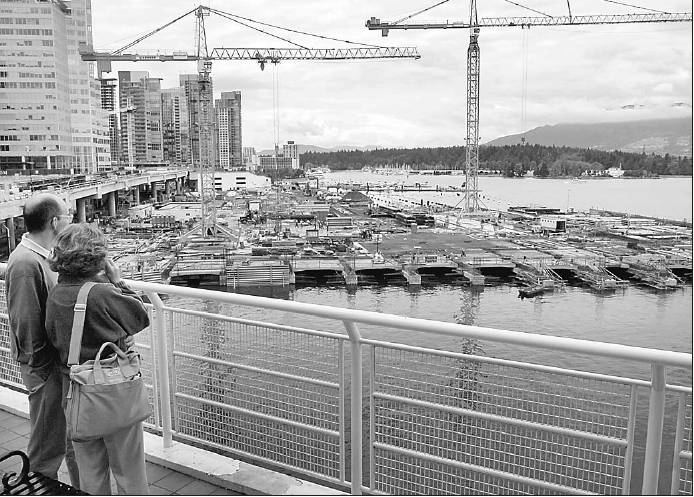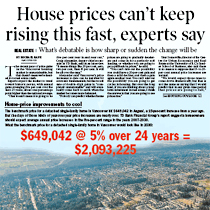CONSTRUCTION I Special partnerships designed to ease financial burden of project
Bruce Constantineau
Sun

IAN LINDSAY/VANCOUVER SUN The Vancouver Convention &Exhibition Centre at the foot of Burrard Street has already attracted bookings for 2010.
Cost-conscious Vancouver Convention & Exhibition Centre officials — worried about potential overruns at the $615-million expansion project — will sign creative partnerships that will see suppliers pay some of the expenses to complete the new building, VCEC president Barbara Maple said Friday.
She noted VCEC recently signed a deal with food and beverage supplier Centerplate Catering that has Centerplate providing the kitchens and cooking equipment in the expanded convention centre due for completion in late 2008. Similar arrangements with other suppliers are currently being considered.
“There are some really good partnerships we can have that will alleviate some of those costs,” Maple said, following a speech to the Vancouver Board of Trade.
Rising labour and materials costs in B.C.’s booming construction sector have created major concerns among convention centre officials with a mandate to keep the expansion project on time and on budget. The federal government last week rejected a B.C. bid for more money to cover cost overruns.
Russ Anthony, president of the Vancouver Convention Centre Expansion Project, said about 80 per cent of the project has been tendered now with firm prices in place.
“Once we get the rest of our tenders in place, we’ll have a lot more confidence that we can meet our objectives and our budget,” he said in an interview.
He said workers will begin erecting steel on the expansion project site this fall while glazing work starts early next year. Contracts are in place to have the work done but labour shortages can create issues around safety and productivity, Anthony said, as workers deal with overtime and extended hours.
He said at this stage of the project, the options to cut costs are limited because the scope and design of the new facility have been set.
“The thing to remember about our project is that we are a revenue-generating asset so we have to meet certain requirements, with respect to the quality and size of the building, to satisfy the demands of the market,” Anthony said.
The project will more than triple the size of the existing convention centre to 472,140 square feet of total function space.
Maple said the new facility will generate an annual economic impact of $650 million, more than three times what the current centre brings in. She said a recent study found that out-of-town delegates generate $553 in daily spending — four times the average daily spending of other visitors.
“We have solid revenue targets for the building but, having said that, convention centres are loss leaders in almost every market,” Maple said. “They’re designed for their economic impact.”
She said the expanded convention centre has already attracted major events like the MPI World Education Conference, with 3,500 delegates in July 2010, and the American College of Chest Physicians Conference, with 6,000 delegates in October 2010. Maple said they are among more than 70 “expansion-size” events in various stages of the booking process.
The new facility is expected to host its first convention around January 2009 and will continue to host events until September of that year, when it is turned over for use as a broadcast and media centre for the 2010 Olympics until March of 2010.
© The Vancouver Sun 2006







